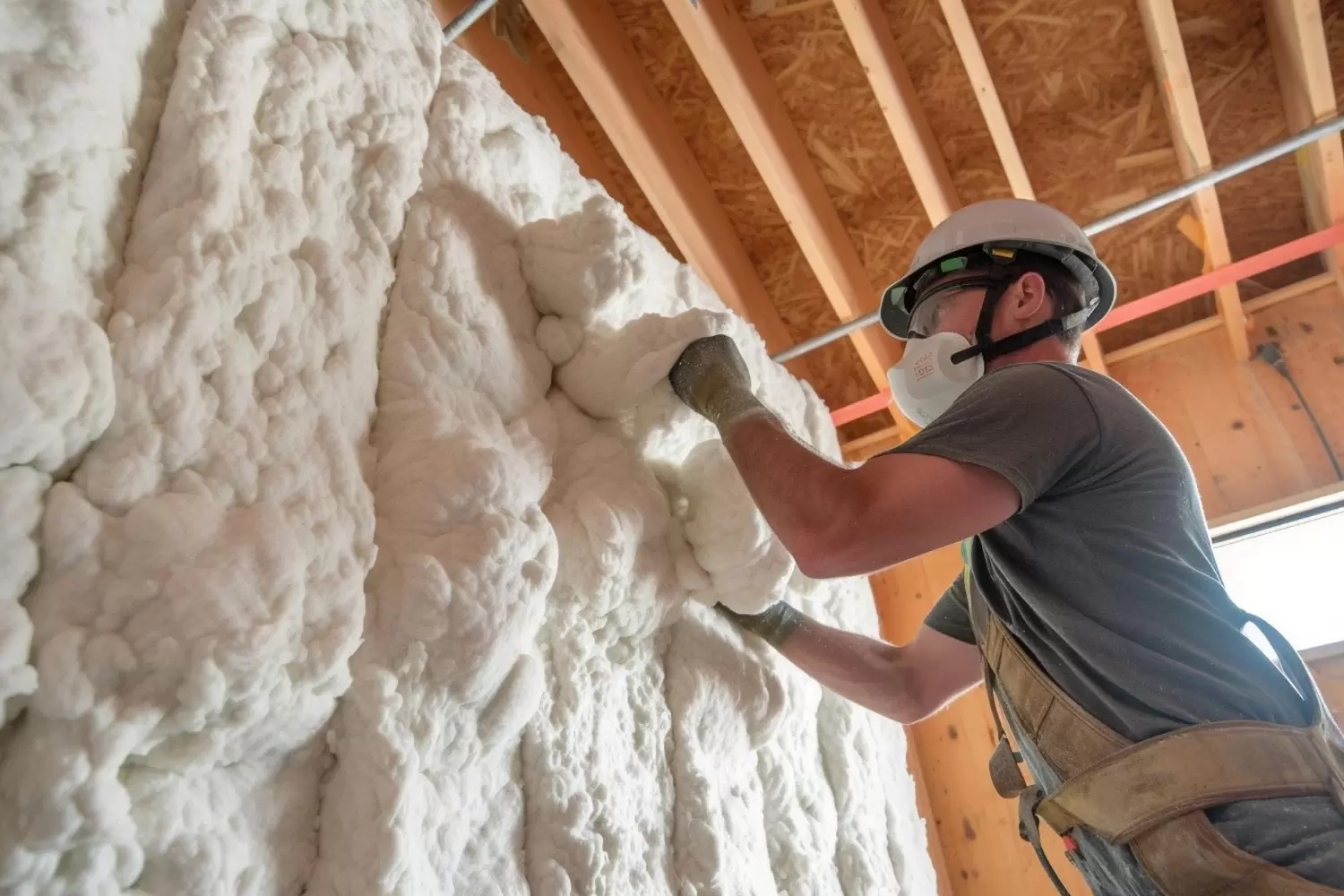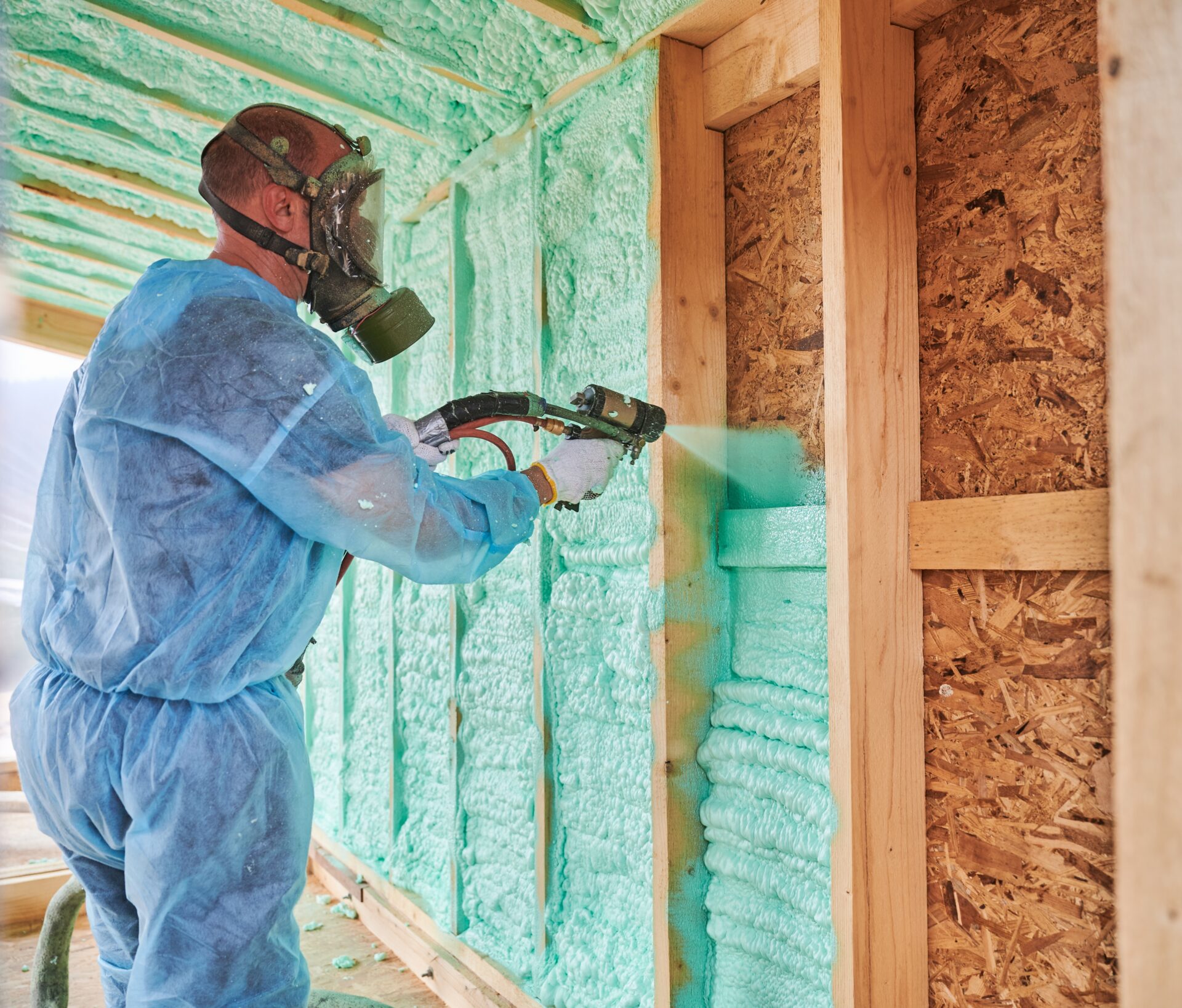Top Applications of Spray Foam for Residential and Commercial Properties
Top Applications of Spray Foam for Residential and Commercial Properties
Blog Article
Spray Foam: The Ultimate Remedy for Air Sealing and Insulation
Spray foam insulation has become a leading service for reliable air securing and thermal insulation, using a special combination of residential or commercial properties that set it apart from standard techniques. Its capacity to expand and fill voids makes it specifically reliable in avoiding air leak, which can substantially affect power efficiency. However, recognizing the complete scope of its advantages, installation processes, and comparisons with other insulation kinds is essential for making educated decisions. As we explore these aspects, the ramifications for both new building and constructions and retrofits come to be progressively considerable. What factors should influence your selection?
What Is Spray Foam?
Spray foam is a functional insulation material that incorporates the principles of air sealing and thermal resistance to boost power efficiency in structures. Made up mostly of polyurethane or other similar compounds, spray foam is applied as a liquid that increases upon contact with surface areas, producing a strong, continual layer of insulation. This distinct residential property enables it to load spaces, fractures, and gaps that conventional insulation products may neglect, supplying an exceptional air seal.
There are 2 main kinds of spray foam: open-cell and closed-cell. Open-cell spray foam is lighter and more flexible, offering exceptional noise absorption and a lower R-value per inch - Spray Foam. On the other hand, closed-cell spray foam is denser, supplying a higher R-value, dampness resistance, and included architectural integrity to building components
The application process typically entails customized equipment, making sure a smooth application that adheres to various substrates, including timber, steel, and concrete. This adaptability makes spray foam suitable for both brand-new constructions and retrofitting existing structures. Its capability to produce an airtight barrier significantly adds to decreasing power intake and improving interior air quality, thereby making it a favored option among property owners and contractors alike.
Benefits of Spray Foam Insulation
One of the most substantial advantages of spray foam insulation is its extraordinary capability to produce a continual air barrier, which properly reduces power loss. Unlike conventional insulation materials, spray foam expands to fill splits and gaps, making certain that air leak is considerably decreased. This particular not just improves energy performance yet additionally leads to decrease utility costs gradually.
In addition, spray foam insulation supplies remarkable thermal resistance, adding to a more stable indoor atmosphere. Its high R-value per inch enables reliable insulation in constrained spaces, making it suitable for attic rooms, walls, and crawl spaces. The moisture-resistant buildings of spray foam aid prevent mold and mildew and mold growth, promoting much healthier living conditions.
One more essential advantage of spray foam insulation is its sound-dampening qualities (Spray Foam). It successfully minimizes sound transmission in between rooms, creating a quieter and more comfy home environment. The durability of spray foam also sticks out, as it does not droop or work out over time, keeping its performance throughout its lifespan
Just How Spray Foam Works
Understanding exactly how spray foam insulation functions is important for valuing its performance in air sealing and thermal resistance. Spray foam insulation includes 2 primary elements: isocyanate and polyol resin. When these components are mixed, they undertake a chain reaction that causes the material to increase swiftly, producing a dense foam that fills spaces, dental caries, and fractures.
As the foam expands, it sticks to surface areas, creating an impermeable seal that significantly decreases air infiltration. This particular makes spray foam insulation highly efficient at preventing drafts and moisture penetration, which can lead to energy loss and damages over time. Additionally, the closed-cell version of spray foam uses superior thermal resistance as a result of its rigid structure, efficiently lessening warmth transfer.
The unique buildings of spray foam permit it to adhere to uneven surface areas, making certain extensive coverage and a smooth obstacle. Consequently, spray foam insulation not just enhances power effectiveness but additionally adds to improved interior air top quality by minimizing the accumulation of allergens and toxins. Inevitably, recognizing the auto mechanics behind spray foam emphasizes its role as an exceptional choice for insulation and air securing in both residential and industrial applications.
Setup Process Introduction

Before installation, the room has to be appropriately cleansed and prepped, making certain that surface areas are totally free from dampness, particles, and dirt. This step is vital due to the fact that contaminants can endanger attachment and total performance. Once the area is prepared, the application entails blending the 2 elements of the spray foam, which increases upon contact and fills up voids successfully.
Trained professionals should conduct the installation, making use of specific devices to ensure uniform protection and optimal density. Safety and security preventative measures, consisting of wearing safety gear and making certain proper ventilation, are essential throughout this process. After application, the foam typically treatments quickly, forming a strong barrier that improves power performance.
Comparing Spray Foam to Standard Insulation
When evaluating insulation choices, spray foam insulation stands out in contrast to traditional materials such as fiberglass and cellulose. Unlike fiberglass and cellulose, which can enable air seepage, spray foam expands upon application, filling up spaces and gaps to develop a closed seal.
In addition, spray foam provides a greater R-value per inch than standard insulation types, offering more effective thermal resistance in a thinner profile. This characteristic is specifically beneficial in areas with minimal dental caries depth. Spray foam is immune to wetness and mold and mildew growth, which can be a considerable problem with cellulose and fiberglass, especially in humid atmospheres.
Nevertheless, spray foam insulation generally brings a higher ahead of time cost than its standard equivalents. Property owners must evaluate this initial financial investment against long-lasting energy financial savings and efficiency benefits. Ultimately, while both insulation kinds serve their purpose, spray foam arises as an advanced option for contemporary insulation needs, especially in regards to air sealing and thermal efficiency.

Verdict
In recap, spray foam insulation stands for an extremely reliable solution for accomplishing optimum air sealing and thermal resistance. Its unique residential properties, including moisture resistance and noise dampening, make it suitable for different applications in both brand-new building and constructions and retrofitting projects (Spray Foam). Although the preliminary costs may be higher compared to conventional insulation products, the long-lasting benefits, such as significant power savings and improved interior air top quality, warrant the investment and emphasize its value in modern-day structure techniques.
Spray foam insulation has arised as a leading option for view it effective air securing and thermal insulation, wikipedia reference providing a distinct mix of properties that establish it apart from standard methods.Spray foam is a versatile insulation product that integrates the concepts of air sealing and thermal resistance to enhance energy effectiveness in structures.When reviewing insulation options, spray foam insulation stands out in contrast to typical materials such as fiberglass and cellulose. Ultimately, while both insulation types serve their objective, spray foam emerges as a much more sophisticated service for modern-day insulation requirements, specifically in terms of air sealing and thermal effectiveness.
In summary, spray foam insulation represents a very reliable remedy for attaining optimum air sealing and thermal resistance.
Report this page